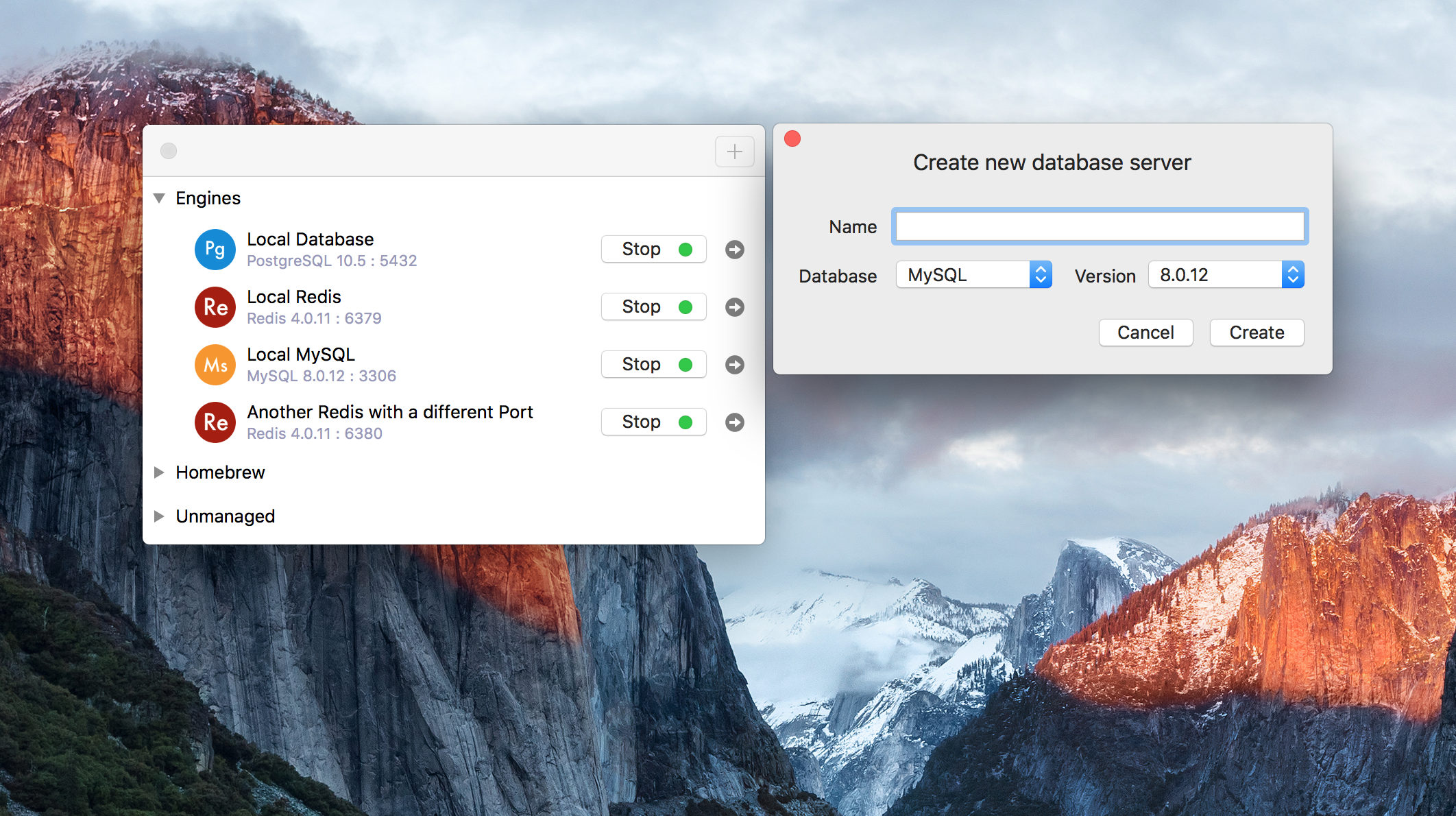The easiest way to create any local database server on Mac
When you are running your own database instance in production you might appreciate the practice locally. But if you sometimes see the stress with setting up a local database server, chances are, you are not alone.
1. Homebrew can’t help you much
When it comes to setting up a local database server, homebrew is the most common choice. Using Homebrew service is kinda convenient, but sometimes, it comes with a lot of configuration issues.
- Homebrew is not always fast to use the latest driver version but once it updates, you can’t go back to the older versions. You just don’t have version options to choose from, only the latest.
- If you can manage to download an earlier version and run it simultaneously, it’s easy to mess up with your current setup and hard to manage versions.
This has always proven a big pain point. Especially when you have many local databases.
2. You also don’t like Docker.
Docker instance is another great way, but with a lot of performance disadvantages such as:
- Large disk usage
- Permissions issues from volume mounts
- The poor debuggability or stability
It’s still not the optimal solution though.
3. You don’t remember commands.
Sometimes, you found yourself clumsy with command lines and simply want to skip writing it, given that dealing with the complex configuration isn’t required.
4. Or you are totally new to a database and don’t know where to start.
Then we have something for you.
All databases in one single app.
We are working on an all-in-one database engine called DBngin. It allows you to set up a local database server of any versions within a click:
- It’s lightweight. Hundred times lighter than Docker.
- Homebrew service and unmanaged packages are included.
- Free 100%, forever!
It comes with the most popular database packages available right “out of the box” including MySQL, PostgreSQL, Redis, etc, which you can easily upgrade to the latest version.
Create a local database server in a fingersnap
It might take an entire morning to upgrade your PostgreSQL version to 10 via homebrew, but you can download DBngin and get it run for like 1 minutes.
A tiny app with simple user experience, no command, no complicated setup, it just works with minimal effort. Just download, install and run the app, then you have a local database ready and awaiting new connections. Quit the app to shut down the server when you’re done.
It makes it dead-easy to run multiple versions of any drivers locally without thinking about the hassle of managing them.

[Update Sept 3rd] We just released the first version of DBngin. Check it out at DBngin homepage